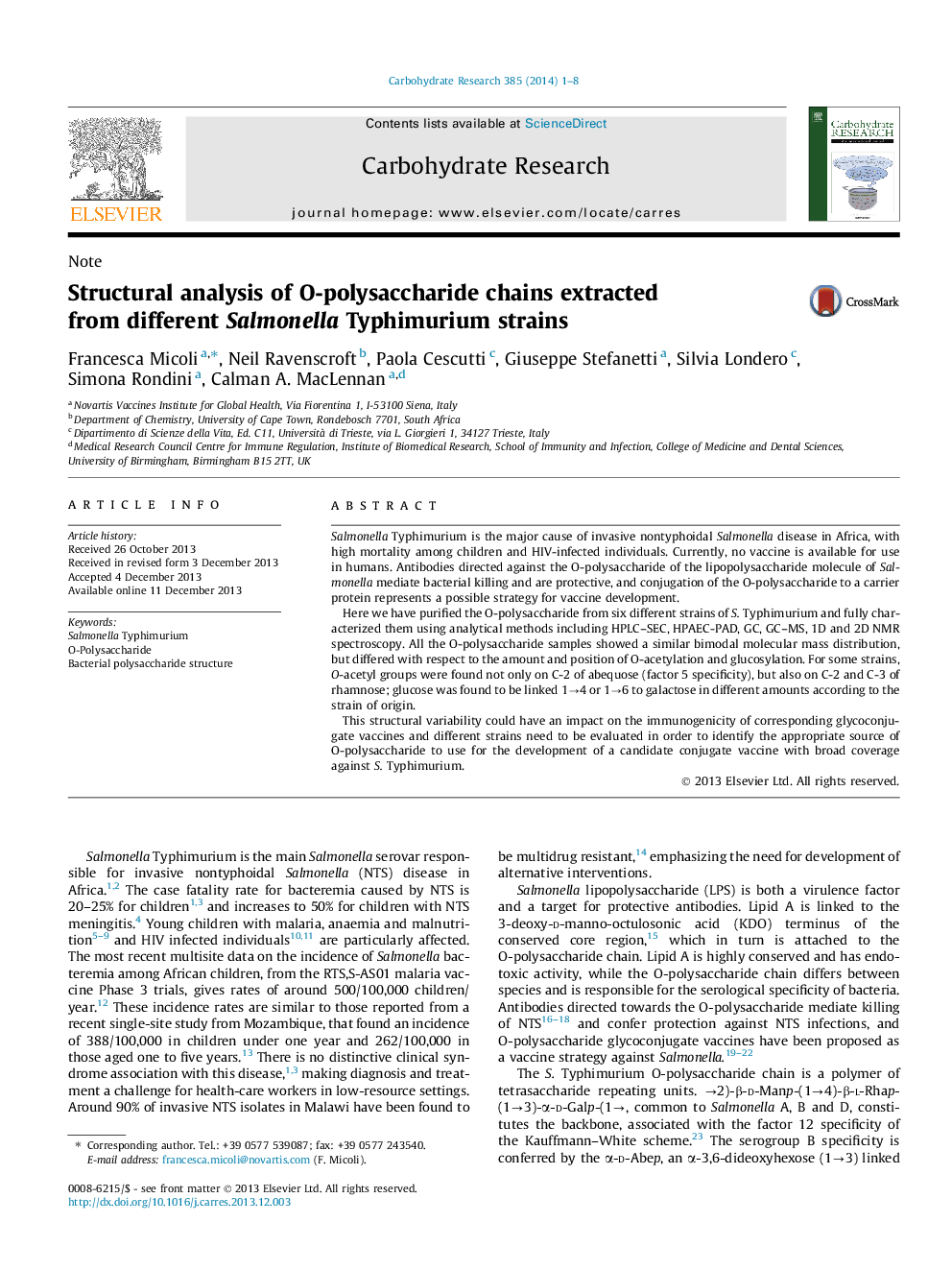| Article ID | Journal | Published Year | Pages | File Type |
|---|---|---|---|---|
| 1387932 | Carbohydrate Research | 2014 | 8 Pages |
•S. Typhimuirium O-polysaccharides from different isolates fully characterized.•High variability found in terms of O-acetylation and glucosylation.•Analytical methods in place for full O-polysaccharide structural characterization.
Salmonella Typhimurium is the major cause of invasive nontyphoidal Salmonella disease in Africa, with high mortality among children and HIV-infected individuals. Currently, no vaccine is available for use in humans. Antibodies directed against the O-polysaccharide of the lipopolysaccharide molecule of Salmonella mediate bacterial killing and are protective, and conjugation of the O-polysaccharide to a carrier protein represents a possible strategy for vaccine development.Here we have purified the O-polysaccharide from six different strains of S. Typhimurium and fully characterized them using analytical methods including HPLC–SEC, HPAEC-PAD, GC, GC–MS, 1D and 2D NMR spectroscopy. All the O-polysaccharide samples showed a similar bimodal molecular mass distribution, but differed with respect to the amount and position of O-acetylation and glucosylation. For some strains, O-acetyl groups were found not only on C-2 of abequose (factor 5 specificity), but also on C-2 and C-3 of rhamnose; glucose was found to be linked 1→4 or 1→6 to galactose in different amounts according to the strain of origin.This structural variability could have an impact on the immunogenicity of corresponding glycoconjugate vaccines and different strains need to be evaluated in order to identify the appropriate source of O-polysaccharide to use for the development of a candidate conjugate vaccine with broad coverage against S. Typhimurium.
Graphical abstractFigure optionsDownload full-size imageDownload as PowerPoint slide
